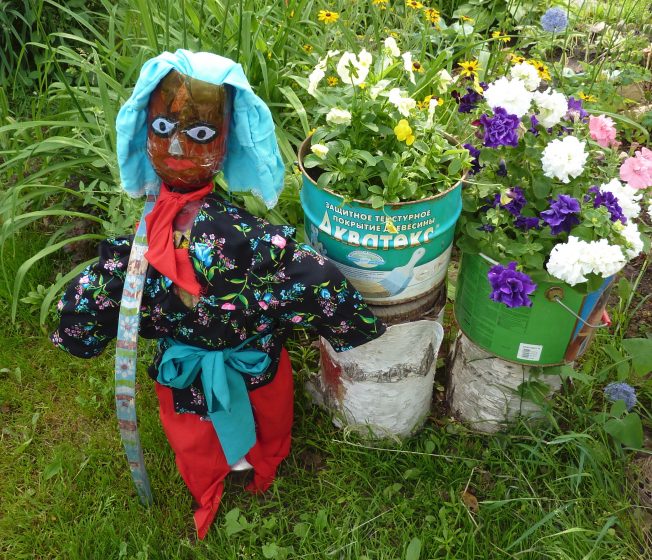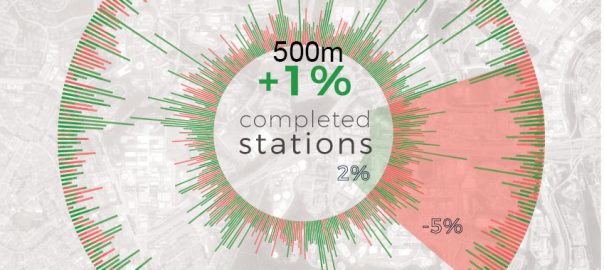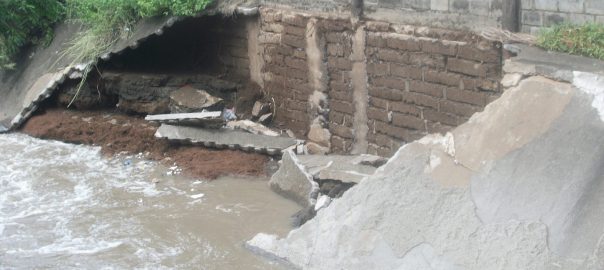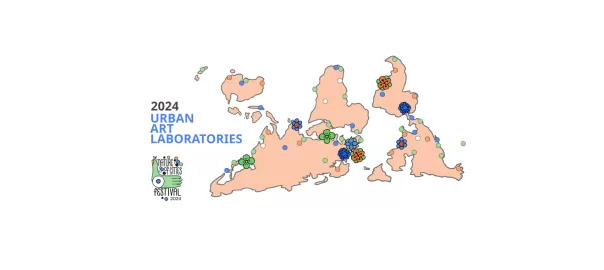Neglecting gender and the unequal dimension of access and decision-making rights would doom environmental movements to failure. Let us be imaginative. What does it mean to revisit what the promise of equality means in terms of integrating the importance of gender in socio-environmental inequalities?
It is generally accepted that the bulk of the ecological crisis is associated with lifestyles that over-consume resources and natural environments. Thus, the 1972 Club of Rome report obserserved that, at a time when it appears difficult to reform lifestyles or to go back on the idea of progress or growth, the first measures to protect nature should concern extraordinary species and spaces (whether wild, rare, endangered or victims of traffickers, etc).
This paper is part of the TNOC Francophone project, and was first published in French.
Ordinary, grassroots environmentalism, composed of lifestyles and individual and collective mobilizations that structure the production of the environment, is first and foremost the work of women, whose role is crucial in this domestic sphere extended to the environment[2]. Moreover, at present, as in the past, the formal and informal collectives involved in local environmental protection, particularly in movements against major urban projects, are largely feminized and—which goes hand in hand—invisibilized.
On the contrary, the rescue of extraordinary biodiversity, rare species, and spaces offers new fields of adventure to a predominantly male population that is not bogged down in the maintenance of everyday living conditions. The media is immediately interested in such extraordinary behaviours, providing key support for the creation of sustained international networks for the safeguard of the planet[3].
It can be concluded that the present discrediting of the everyday living environment as a banal and difficult to mediate is linked to the undervaluation of the feminine. Women pay a high price for this undervaluation of the feminine and of the work women do to support the everyday environment. We already know that environmental changes have a greater impact on women than men. In recent years, many reports have focused on the importance of giving due consideration to socio-environmental inequalities, particularly gender inequalities[4]. Public policies and mobilizations have been proposed to promote equal access rights and the sharing of benefits and uses of ecosystems and natural resources. In this sense, the “capability approach”[5] aims to integrate discriminated populations, particularly women, linking individual and collective capabilities and access opportunities (for example, rights of access to land and natural resource ownership, to education)[6].

The COVID-19 crisis highlights the importance of women’s work in times of disaster[7]. The professions or skills that are essential in the fight against COVID-19 and the support of daily life are those of care assistants, nurses or cashiers, and activities providing care in society or security of supply. The proportion of women is still rising among employees in retirement homes, home care workers, and day-care centres. Women are in the majority at checkouts in stores and pharmacies. Numerous women’s collectives have developed to provide for the artisanal manufacture of masks, as evidenced by the recent article in Entre les lignes, Entre les mots[8]. These women are relatively visible and taken into consideration, especially in the media, but they are often desribed in terms of the value placed on the work of caring: always described anecdotally, in the social facts sections of the bmedia, and secondary to the struggles of doctors and policy arbitrations, which mainly represented by male experts. (A distinction should be made here between reports in hospital wards, which may occasionally follow women, doctors, interns or nurses, and the staging of the “medical expert” on the television set, locked down in his or her home or filmed in her or his office, and represented outside and above the hands-on action.)
Homemade masks or meals delivered by chefs are indicative of a capacity shared in the ordinary world to quickly grasp what matters in the present situation and to mobilize one’s skills in the service of others. Yet, on a daily basis, the “experts” in the heroic fight against the pandemic and the little hands that humanize the conditions of the pandemic and try to make the world livable are seen as opposed and hierarchical. The providers of everyday capacity their contributions are considered as “care” and and thus are considered less important[9]. The media, including television, which has regained all its persuasive and ideological power, are thus creating, to the benefit of the dominant powers, a narrative of the crisis that firmly maintains the old categories of power.
Meanwhile, women are being massively impacted by the financial consequences of the COVID-19 crisis, an epidemic emerging from an environmental crisis and significant erosion of biodiversity. While 8% of men work part-time, 31% of women do, which means lower than average incomes. Regardless of their status as workers, 75% of women have to take full material and mental responsibility (“the mental load”) for domestic chores for about 3 hours a day. The gender wage gap for comparable jobs in France is, depending on the wage level, between 10% and 25%[10]. Jobs held by women continue to be undervalued and underpaid.
On the other hand, as Marlene Schiappa’s request for a report on gender bias among experts in the media shows[11], women have little presence in the public arena of the media and politics. While many male experts and men speak on radio and television, female experts and doctors, let alone nurses or nursing auxiliaries, are not questioned. This omnipresent male voice is a reminder of male domination, which is all the more evident in times of crisis. It is also a patriarchal reminder of the monopoly of expertise.
Let us say then—and this is the counterpart of our first hypothesis—that if women’s work, inventions, and intelligence play a crucial role in the production of a domestic sphere extended to everyday environments, they play, it seems, a supplementary and accompanying role in times of crisis, worthy of a reserve army that can be mobilised in times of war, if we adopt the rhetoric deployed in the early days of the COVID epidemic-19 by French President Macron. It is true that in times of war, particularly during the two World Wars, women worked in arms factories or were seamstresses, nurses, caretakers[12]. However, this rhetoric of war is also a way of consolidating gender inequality: care activities are in the “third line”. They maintain the thread of ordinary life, but are devalued and invisible in the same way as the “ordinary”. Is it not the permanent invisibilisation of women’s living and working conditions one major element that keeps an unsustainable socio-environmental system going at the price of growing socio-environmental inequalities?
Women, disasters and resilience
The essential work of women in maintaining everyday life forms has long been analysed in terms of environmental production. One can draw on the seminal text of the science fiction writer Ursula Le Guin, who, in a short essay in 1986 titled “The Carrier-Bag Theory of Fiction”, wrote :
Many theorizers feel that the earliest cultural inventions must have been a container to hold gathered products and some kind of sling or net carrier. So says Elizabeth Fisher says in Women’s Creation (McGraw-Hill, 1975). But no, this cannot be. … for what’s the use of digging up a lot ofpotatoes if you have nothing to lug the ones you can’t eat home in—with or before the tool that forces energy outward,we made the tool that brings energy home. It makes sense to me. I am an adherent of what Fisher calls the “CarrierBag Theory” of human evolution.
Hence, according to Le Guin, it is necessary to think first of all of the contribution of women to the resource in terms of collecting and relating. The interesting aspects of the metaphor of the container is twofold; on the one hand, it reminds us how much we need containers as much as contents to make society; and on the other hand, it emphasizes the importance of understanding things as symbols of what makes society. For example, looking at the spear rather than the basket has hitherto been synonymous with the power granted to the hunter and the lack of interest in women who cultivated. This also leads to elevating in the public space the heroes who occasionally hunt over the heroines who constantly cultivate, harvest, and clean. In short, without pushing the metaphor beyond its limits, it allows us to think about the relationship between women and resources, as well as the division of material and symbolic labour, but also between what is offered to be seen (and considered) and what is largely invisible.
Moreover, if we believe the IPCC, and if we look at socio-environmental inequalities, women are the ones who will pay a great deal in terms of adaptation to climate change. On 8 August 2019, the IPCC has published a Special Report on “Climate Change, Desertification, Land Degradation, Sustainable Land Management, Food Security and Greenhouse Gas (GHG) Flows in Terrestrial Ecosystems”[13]. Even if there are very great uncertainties in terms of adaptation, largely dependent on political choices, Asia and Africa are projected to have the greatest number of people likely to be dispossessed by desertification and environmental change ; women are the ones on whom this everyday disaster will weigh the heaviest. It is in for this reason that international agencies are constantly advocating for policies to empower women, given their importance in the resilience of local environments and communities[14]. Indeed, the effectiveness of the policies carried out will directly depend on the involvement of those in charge in these communities, especially women.
The loss of livelihoods can also be synonymous with an increase in gender-based violence. Women often face domestic violence and sexual abuse in times of disaster. First, for COVID-19, although it is a little early to draw conclusions about the impact of this epidemic, it is apparent that lockdown exacerbates domestic tensions and violence. Calls to domestic violence hotlines have increased by 30 percent[15]. Second, women often have limited access to the means of alerting or even repressing such violence, which is culturally entrenched and considered of secondary importance in times of disaster[16]. Finally, women as representatives in decision-making bodies at all levels on natural disaster risk reduction is particularly low and representation of women’s interests is rarely properly identified[17]. Numerous reports and works point to the following facts. Women are often poorer and therefore more vulnerable in times of crisis. For example, Hurricane Katrina, which devastated New Orleans (USA) in 2005, affected African-American women and their children more than other groups. In Sri Lanka, it was easier for men to survive the 2004 tsunami because they had the advantage of knowing how to swim and climb trees, skills that are only taught to boys.
With regard to adaptation to climate change, as the same IPCC report points out, increased droughts and water shortages will mainly affect women, who are the main collectors, users and managers of water in poor countries. Water scarcity may increase their workload and reduce their ability to devote their time to other tasks, such as education. The increase in climate-related epidemics, with COVID-19 being only one of many that will inevitably follow, will mainly impact women, who, as we can see today, spend much of their time caring for the sick and raising children. Finally, the erosion of biodiversity has an impact on women’s work, which depends on crop diversity and the proximity of food resources to adapt to climate variability. Women farmers are responsible for half of the world’s food production and produce between 60 and 80 percent of the food in most developing countries[18].
Similarly, women are essential in supporting households and communities and in implementing mechanisms for adaptation and resilience, as the drafters of the report on climate change and gender equality write[19]. In countries such as Bolivia, Colombia, Peru, Vietnam, Indonesia and India, women are responsible for crop breeding, improving the quality and storage of seeds, and managing small livestock. In addition to knowledge, men and women have different natural resource management practices, all of which are necessary and transferable from one gender to the other for sustainable use and biodiversity conservation[20].
Eco-feminism and environmental care
It is not coincidence that an essential and seminal work on this subject is the work of a woman, namely Silent Spring by Rachel Carson. As early as 1962, Ms. Carson highlighted the deleterious effects of pesticides on the environment, natural life and bird noise—that is, its aesthetic and sensitive dimension—calling for immediate political responses. It was as a result of such work that DDT was banned in 1972 in the United States. The 1970s saw the emergence of important ecofeminist movements and works in different countries that highlighted the importance of the environment. In this sense, the environment has been an important cause and a triggering process for many feminist struggles. It is ecofeminists in the South who have revived environmental thinking, showing in a radical way how, in countries that suffer from the legacy of colonial domination that has powered their economic potential but degraded their environment, the environmental consequences of development have affected women more heavily.
In India, the Chipko movement in 1973 against deforestation and Vandana Shiva’s work on food and agricultural work is widely acclaimed[21]. One of the conclusions that may be drawn from these different works is the need to review environmental justice movements in terms of gender, especially in light of future disasters. A better understanding of the changing relationships between women and environments, and an analysis of the ways in which women contribute to relational approaches to environmental management, is essential for the future.
Neglecting gender and the unequal dimension of access and decision-making rights would doom environmental conservation to failure[22]. Indeed, according to the OECD (Social Institutions and Gender Index, SIGI), only 37 percent of the 160 countries studied give women and men equal access to land ownership and use. It is therefore important to develop a reflection on all future risks: the inequalities before the crisis (epidemic or other), during the crisis, the impact of these inequalities on the management of the crisis, and the consequences of the crisis on these inequalities. Post-disaster management must inevitably include the issues related to the existence of patriarchal systems.
Invisibilisation and domestication
It is critical to appreciate what we make visible and what we leave in the shadows, or make invisible. Should women choose to remain in the shadows, or do we demand recognition? Which, and how? If the place of women and their words is reduced, or even often attacked, it is because of their structural invisibility. It is then a question, beyond deploring them, to ask ourselves: what place is given to invisibility on the symbolic level and in the distribution of values? That the invisible does not translate so easily into the register of the visible, we sense it in the embarrassment we may feel at the discourse of heroisation of the ordinary providers of care, and not just for its hypocrisy. It is the whole difficulty of the ethics of care and of valuing the ordinary, the discreet, the “low”. It is all very well to accept to be invisible on condition that one is not devalued by the condition, and have the choice of being or not being. It’s also about having the choice of forms in which to make oneself visible, forms that are often narratives, narratives that go into detail, into the flesh of the ordinary world, that leave room for unforeseen bifurcations, reversals and the uncertainty of feelings, their inevitable ambiguity. Valuing the shadow in which women are held would mean changing an entire system of values so as to no longer make it the double darkness of the light. Therefore, sublimating (or aestheticizing) the ordinary does not always mean challenging the implicit hierarchy of what matters.
A key to resolving this fundamental theoretical difficulty lies in ordinary environmentalism. While the environmentalist movement has focused primarily on emblematic spaces and species, women around the world are confronted with the protection of this ordinary environment, in its everydayness, resourcefulness, both material and symbolic. The preceding analyses make it possible to distinguish between a “mainstream” environmentalism, that of the protection of natural spaces, characteristic of the Western white elites, and an “environmentalism of the poor”, which is concerned with pollution, environmental inequalities, vulnerable populations, rooted in the underprivileged countries, and the underprivileged spaces of our privileged societies[23]. This ordinary environmentalism is that of the least privileged social strata, including care workers. Two ideas of nature correspond to this social, cultural and gendered divide: one is that of “wild” nature, outside ordinary society, which must be protected as such, sheltered from human intervention; the other is that of a nature of which we are part, where we have relations of interdependence and responsibility. To put it another way, to ignore the fact that today we live in places where socio-environmental relationships need to be transformed is to forget what makes up the substratum of future disasters and to neglect the possibilities, in a changing environment, of profound cultural transformation of relationships with ecologies.
On the road to ordinary environmentalism
The development of the material wealth of societies has only been possible at the cost of the exploitation and enslavement of a large part of the planet, both human and non-human. Therefore, making an unjust system sustainable will not be enough to transform the symbolic and material values at the origin of this development. As regards the protection and productivity of ordinary environments, contempt for care activities has led to an incomplete the liberal conception of morality and justice; it poses a problematic conflict between society’s moral dimension and the actions perpetuates the society in its current forms (daily and invisible care, the production of the daily environment). Thus, the invisibility of care in moral theory condemns a society to disregard the source of its own conservation as a moral society. It reinforces or justifies ordinary indifference to care work in societies[24].
Environmental care, finally, is not a subspecies or extension of care to the non-human. Care for the environment (in both senses: attention to the ordinary environment and the well-being that this environment provides to individuals) is emblematic of the work of care : attention to what makes our lives possible, and which for that very reason we deliberately do not see and neglect. A radical vision of care forces us to see the whole form of life of the privileged as maintained by a caring activity produced by the dominated, but also by the siphoning off of the resources of the South that ensure the maintenance of life and the standard of living of the rich people of societies. The debates on climate change and the nations and cultures that are primarily and historically responsible for it are often characteristic of an ethico-political conception that is indifferent to care, and therefore fundamentally unjust. These are the same nations and cultures that make all the populations of the world bear the weight and responsibility for the transformations brought about by their own development. It is with environmental care that the nonsense of the opposition between care and justice appears, since it appears that only in the ethics of care can we take into account the issues of global justice. Research on the role of women in agricultural work, in resource or biodiversity management, in the preservation of daily lives are all ways to clarify the issues of justice associated with socio-ecological, technical and economic transitions. Research is therefore needed to perceive the limits of a development essentially oriented towards the preservation of lifestyles based on the over-exploitation of natural environments.
Let us be imaginative. What does it mean to revisit what the promise of equality means in terms of integrating the importance of gender in socio-environmental inequalities?
The following proposals are suggestions. Capabilities are defined here summarily as the capacities of citizens to mobilize their experiences and relationships with their environments, with a view to enriching their opportunities to be and act by becoming aware of the various factors that affect their living conditions[25]. They are central to an understanding of environmental justice “based on the interaction between social systems and long-term environmental change” known as transformational[26]. These capabilities also require us to think about co-producing risk adaptation policies with the actors concerned, that are contextualized and socially situated, and therefore take into account the gender issue[27]. In doing so, we embrace a conception of socio-environmental justice that links forms of political participation, the recognition of links to the environment and integrates distributive justice[28]. It is also about valuing the ability to interact with other components of the surrounding environment and to create value, be it social, cultural or environmental[29]. For women, it is also a question of being able to value the components of their living environment, whether it be water quality, social relations or local facilities. They must be able to choose to define together the choices to be made, in short to create or contribute to collective action, in order to produce this ordinary environment.
Transforming collective and public action means building on the differentiated relationships, particularly between women and men, to the symbolic and concrete environments and resources present in these environments. The main challenges are to generate situations of socio-ecological innovation, where social innovation depends on taking into account the ordinary environment. We define socio-ecological innovation as social innovation that builds on and enriches living environments to meet the challenges of local and global change[30]. The aim is thus to develop collective and public action to respond to the plural and evolving situations of the inhabitants and by highlighting the presence of women in these systems (for example, with regard to the food supply for solidarity, culinary practices, urban agriculture).
The debate on climate change and its trail of disasters as a challenge for living and living together at the level of families, buildings, neighbourhoods and regions is now necessary in a way that is open to a plurality of voices. The co-production of more transversal and diverse, and therefore less technocratic, visions of adaptation requires starting from the practices and feelings of the inhabitants to co-construct arguments by giving them a translation of public policy, for example with regard to the projects and associative initiatives included in the policies. The notion of care—in the active sense, of taking care of, caring for—can thus be applied to various everyday attitudes and practices of taking the environment into account: individual or collective behaviours that are concerned about the environment (sorting, calculating and limiting one’s carbon footprint, consumption of energy, materials, etc.).
It is therefore necessary to link ecology and sociality more closely by taking advantage of women’s practical, moral and aesthetic resources and skills: through restaurants stocked with unsold food, shared gardens in shelters, an awareness of the convivial and cultural aspect of the environments in which we live, etc. In short, we must pay attention to the mechanisms and approaches that can make it possible to articulate social and environmental justice and give women the opportunity to use their inventive capacities to transform daily life: ecological development taxation to support participatory adaptation projects based on living, living and living together, support for initiatives to organize local meals, childcare, gardening and support for the elderly. Making room for women’s power to act is a condition for democracy to take root on the ground and for the development of our collective capacity to live better and to resist in the disasters to come.
The current crisis is therefore finally raising awareness of the essential role of women in the production of the everyday environment everywhere in the world, but also of the risks to which all humans are exposed by the invisibility of women’s contribution and by the present disregard for all the tasks of care and maintenance of daily life.
Nathalie Blanc, Sandra Laugier, Pascale Molinier, Anne Querrien
Paris
Notes:
[1] Seager, J. (2016). Gender Global Environmental Outlook. Nairobi: United Nations Environment Programme.
[2] Blanc, N. et Paddeu, F. (2018) L’environnementalisme ordinaire. Transformer l’espace public métropolitain à bas bruit », EspacesTemps.net, Association Espaces Temps.net, titre du fascicule : Travaux, p. 16. URL : https://halshs.archives-ouvertes.fr/halshs-02185381. Consulté le 19 mars 2020.
[3] The focus of the scientific literature on the Greens, Friends of the Earth or the consideration of the environment in public administrations has contributed to reduce the environmental movement to its national actors and its contribution to public policies through its electoral successes and failures. This national prism is found in the United States where Kenneth Andrews and Bob Edwards note that the multiplication of national environmental organizations in the United States is very well documented, in contrast to that of local organizations, even though the latter help to define priorities and guide public debate at the national level. Based on a questionnaire survey of environmental organizations in North Carolina, they conclude that the more local the spatial listing of environmental organizations is, the less they mobilize expertise and institutional advocacy among their repertoires of action and the more likely they are to engage in radical discourse and partisan campaigning (Andrews and Edwards 2005). Thus, the image of an institutionalized environmental movement, versed in expertise, that has become cautious about radical social transformation corresponds in France essentially to the 1980s and is disproportionately important at the national level.
[4] Seager, J. (2014). Disasters are gendered: What’s new? In Zinta Zommers & Ashbindu Singh (Eds.), Reducing Disaster: Early Warning Systems for Climate Change. New York: Springer ; Seager, J. (2019). New visions for nature and nature’s contributions to people for the 21st century. New visions for nature and nature’s contributions to people for the 21st century. Intergovernmental Science-Policy Platform on Biodiversity and Ecosystem Services (IPBES). Leach M, Scoones I, Stirling A, 2010, Dynamic Sustainabilities: Technology, Environment, Social Justice, Earthscan.
[5] The capability approach was developed by Amartya Sen, and Martha Nussbaum : Sen, A., 1979, Equality of What ?, The Tanner lecture on human values, Stanford University ; Sen, A., 2010, The idea of justice, London, Penguin books ; Nussbaum M. (2000). Women and human development.The capability approach, Cambridge, Cambridge University Press.
[6] We believe that this capability approach to disaster makes it possible to respond to the suspension of rights resulting from the emergency by evaluating concrete rights, which “ensures a normative resource” (Chavel, S. (2019) Le paradigme des capabilités face aux situations de désastre, raison-publique.fr, https://www.raison-publique.fr/article773.html), but also to relate subjective expectations to the possibilities of rights.
[7] Caroline Criado Perez in Invisible Women : Exposing Data Bias in a World Designer for Men (2019) explains than 29 millions articles have been published on Zika and Ebola, but less than 1% of publications was about gender issues. See : https://www.thelancet.com/journals/lancet/article/PIIS0140-6736(20)30526-2/fulltext
[8] https://entreleslignesentrelesmots.blog/2020/04/08/lutte-contre-le-coronavirus-si-les-femmes-sarretent-les-masques-tombent-et-autres-textes.
[9] Laugier S., Molinier P., Paperman P. Nous défendre – face au discours politique sur le Covid-19 AOC. Analyse Opinion critique, 7 avril 2019. On care Ethics Paperman P., Laugier S. (eds.) Le souci des autres, éthique et politique du care (2005) éditions de l’EHESS.
[10] https://www.inegalites.fr/Les-inegalites-de-salaires-entre-les-femmes-et-les-hommes-etat-des-lieux.
[11] Marlène Schiappa, in charge of Equality between Women and Men and the Fight against Discrimination, sent a mission letter to Céline Calvez, Member of Parliament for Hauts-de-Seine, to analyse the place of women experts in the media at large in this period of containment and crisis of COVID-19.
[12] https://entreleslignesentrelesmots.blog/2020/04/08/lutte-contre-le-coronavirus-si-les-femmes-sarretent-les-masques-tombent-et-autres-textes.
[13] https://www.ipcc.ch/report/srccl
[14] However, critical attention must be paid to the risks of exploitation of rural women in the South, in particular through NGOs, and to their acculturation.
[15] https://www.un.org/fr/covid-19-riposte-globale/covid-19-lonu-alarm%C3%A9e-par-la-%C2%AB-flamb%C3%A9e-%C2%BB-des-violences-domestiques ; https://www.unfpa.org/sites/default/files/resource-pdf/COVID-19_A_Gender_Lens_Guidance_Note.pdf.
[16] Food and Agriculture Organization (FAO) of the United Nations, Rome, 2016, Gender-responsivedisaster risk reduction in the agriculture sector, Guidance for policy-makers and practitioners.
[17] Cf. http://www.unesco.org/new/fr/natural-sciences/priority-areas/gender-and-science/cross-cutting-issues/gender-equality-and-disaster-risk-reduction.
[18] Aguilar Revelo, L., (2009), Manuel de formation sur le genre et le changement climatique, San José (Costa Rica) : Absoluto, https://portals.iucn.org/library/node/9395.
[19] http://www.unesco.org/new/fr/natural-sciences/priority-areas/gender-and-science/cross-cutting-issues/climate-change-and-gender-equality/
[20] Aguilar, L., Mata, G. et Quesada-Aguilar, A., (2010), Gender and biodiversity, International Union for Conservation of Nature (IUCN).
[21] Hache, E. (2016) Reclaim, recueil de textes écoféministes, textes choisis et présentés par Émilie Hache, postface de Catherine Larrère, éditions Cambourakis, Larrère, C. (2012): Féminisme écologique ou écologie féministe Tracés. Revue de Sciences humaines.
[22] The issue of equity is consubstantially associated with that of sustainable development, as Gupta et al. (2019) show.
[23] Sandra Laugier (2016) Politics of Vulnerability and Responsibility for Ordinary Others, Critical Horizons, 17:2, 207-223, DOI: 10.1080/14409917.2016.1153891
[24] The philosopher Annette Baier reports on this in her article What do Women Want in Moral Theory? See also Laugier S. (ed.), Tous Vulnerables? Payot, 2012.
[25] Sen, A., 2010, The idea of justice, London, Penguin books .
[26] Blanc N., Laigle L, 2018. Narratives, capabilities and climate change : towards a sustainable culture, in Birkeland I., Burton R., Parra C., Siivonen K. (Eds), Cultural sustainability and the nature-culture interface. Livelihoods, policies, and methodologies. New York, Routledge, Chapter 13.
[27] Gupta, J., Seager, J. (2019). Re imagining the driver-pressure-state-impact-response framework from an equity and inclusive development perspective. Sustainability Science (2020) 15:503-520.
[28] Schlosberg, D. (2004) Reconceiving environmental justice: global movements and political theories. Environ Politics 13(3):517–540.
[29] The avenues discussed in this article take up the conclusions of the report of the CAPADAPT project funded under the GICC programme by ADEME (2017/2020), adaptation of cities to climate change and “capabilities”: towards an approach in terms of human development.
[30] This definition is the result of the CAPADAPT project in collaboration with L. Laigle.
about the writer
Sandra Laugier
Sandra Laugier is Professor of Philosophy at Université Paris 1 Panthéon Sorbonne, Paris, France, and Senior Fellow of Institut Universitaire de France. She has extensively published on ordinary language philosophy , moral philosophy, and classic American philosophy.
about the writer
Pascale Molinier
Pascale Molinier is professor of social psychology at Université Sorbonne Paris Nord and director of Les cahiers du genre. Her research themes are gendered division of labour, relationship between mental health and work, care ethics, feminist epistemology .
about the writer
Anne Querrien
Anne Querrien, sociologist and political scientist, has been from 1985 to 2010 the editor of the main urban research journal in France Les Annales de la Recherche Urbaine. She is involved in urban farming experiments in Paris Region with the Atelier d’architecture autogérée. Since 2008 she is co-director of the editorial board of the French journal Multitudes.







Leave a Reply